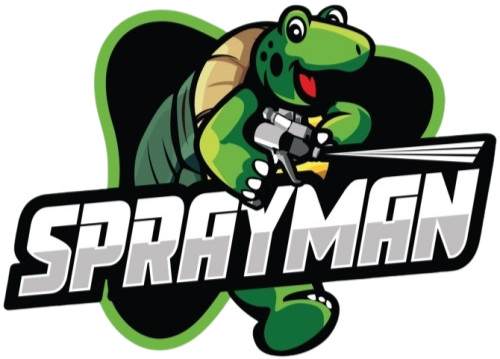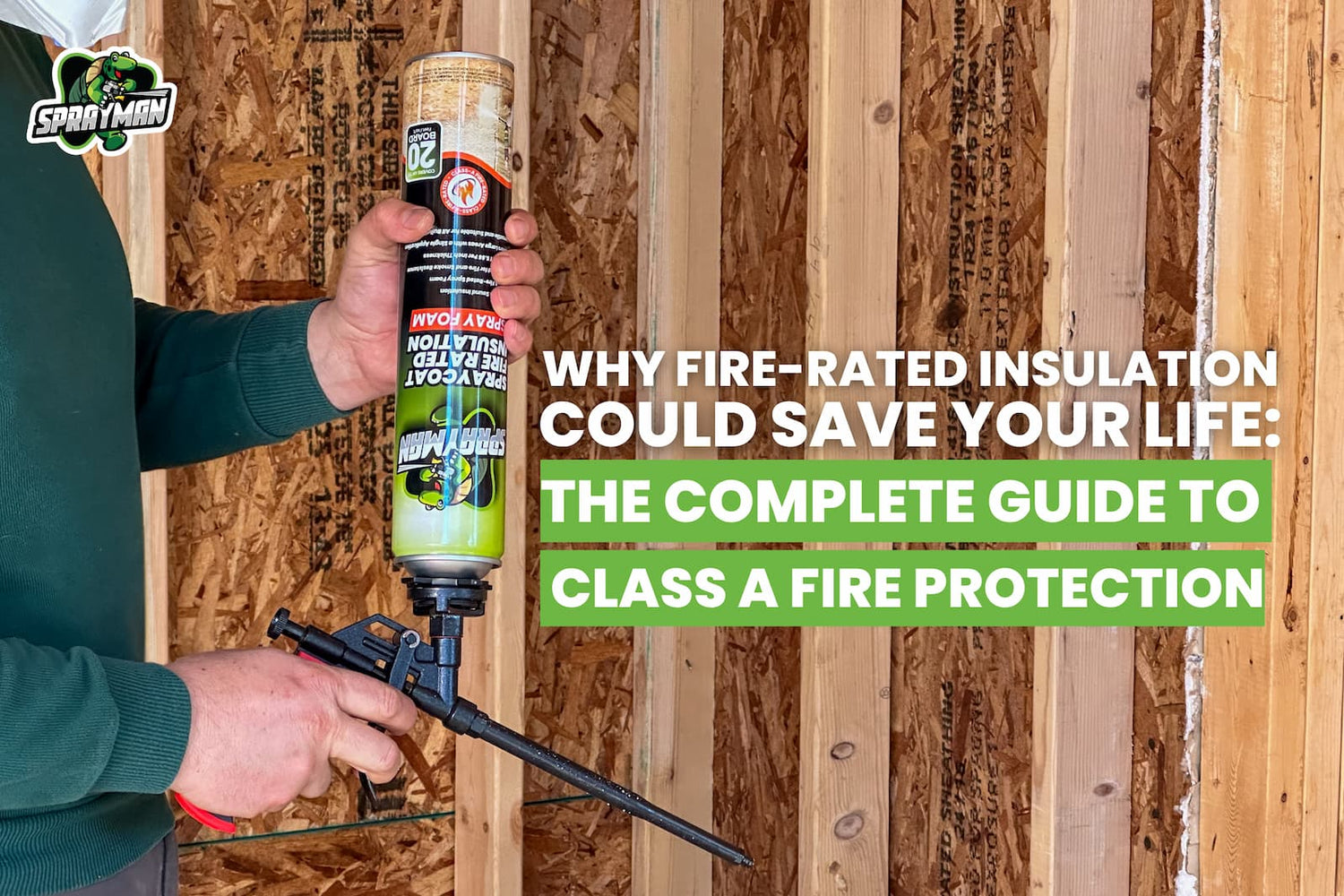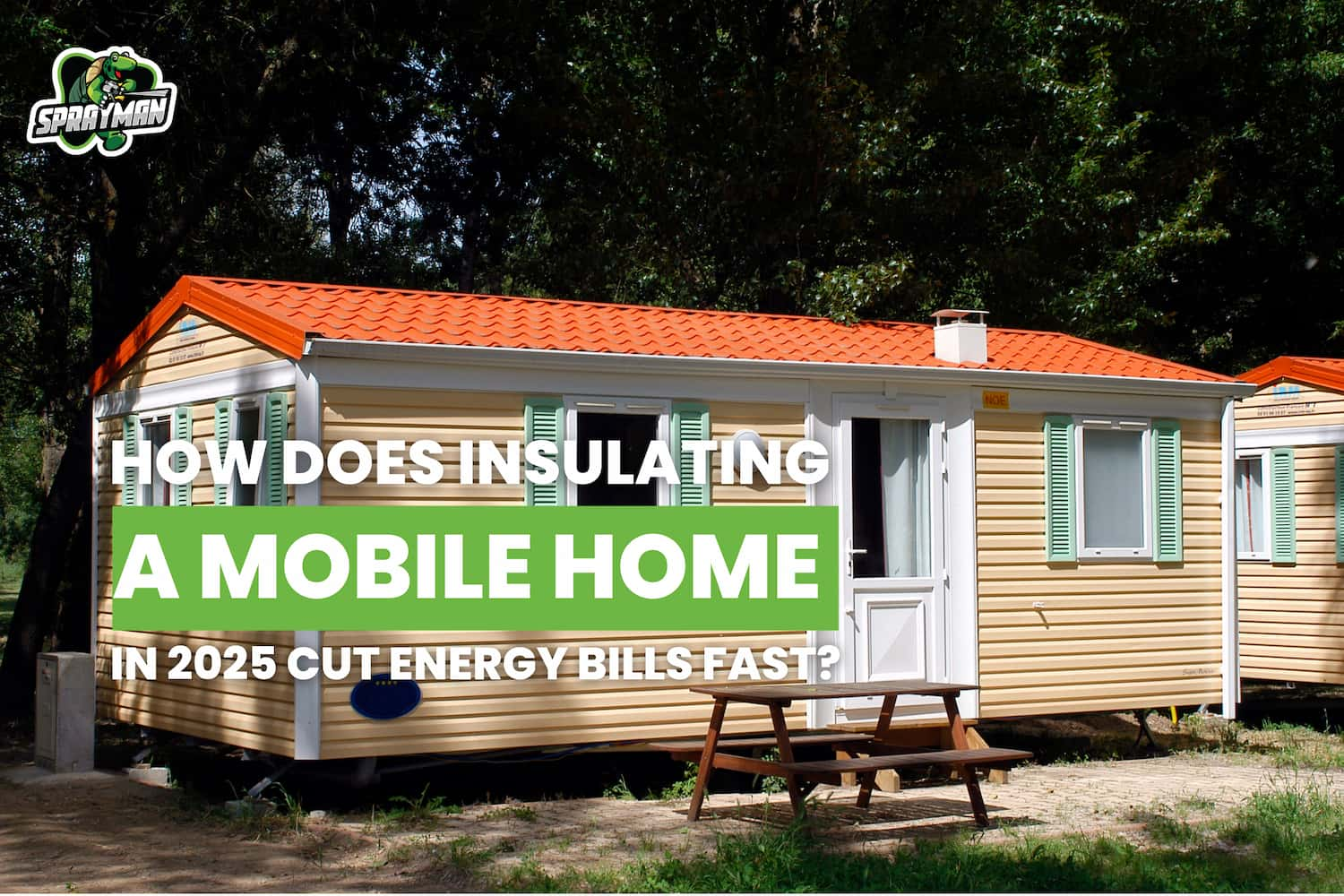House fires claim thousands of lives each year. Many occupants assume that standard insulation offers protection, yet ordinary materials can let flames spread faster and generate lethal smoke. Class A, closed-cell fire rated insulation foam behaves differently: it slows flames, reduces toxic smoke, and increases the time available for safe evacuation.
Many homeowners want to insulate their homes to save energy, fix drafty rooms, or even improve acoustics. Before purchasing an insulation product, compare your options for both energy efficiency and fire resistance. This guide explains how fire-resistant insulation foam works, where to apply it, and why making the right choice can save lives.

What Is Fire-Rated Insulation and Why It Matters?
Fire-rated insulation resists heat and flame better than ordinary materials. The product earns its safety rating only after tests that measure flame-spread speed and smoke output.
What Makes Insulation "Fire-Rated"?
Fire-rated insulation contains special chemicals that slow combustion. These materials self-extinguish or burn very slowly. They also produce less toxic smoke than regular insulation.
The insulation must pass strict laboratory tests. Scientists expose samples to high heat and open flames. They measure flame spread speed and smoke production levels.
How Are Fire Ratings Classified?
Fire ratings use a simple A, B, C system:
- Class A (0-25 Flame Spread Index): Highest protection level. Burns very slowly with minimal smoke.
- Class B (26-75 Flame Spread Index): Medium protection. Burns moderately with some smoke.
- Class C (76-200 Flame Spread Index): Basic protection. Burns faster with more smoke.

Most building codes require Class A materials in critical areas. Meeting these Class A requirements helps ensure compliance with local building codes.
What Does Class A Fire Rating Actually Mean?
Class A rating means your insulation performs like concrete or brick during fires. It barely burns and creates little smoke. This rating requires passing the ASTM E84 test under controlled conditions.
The test exposes materials to 1,000-degree flames for 10 minutes. Class A materials show flame spread of 25 points or less on a 100-point scale.
How Do Fire-Rated Materials Protect a Building?
In a house fire the flames double in size about every 30 seconds. Standard insulation burns fast, feeding the blaze and releasing toxic smoke that can kill before flames arrive. Fire retardant insulation foam spray behaves differently: it chars into a tight barrier that holds heat back, slows flame spread between rooms, and lowers smoke levels. This delay can double your escape time; a wall that fails in 3 minutes with regular insulation may hold for 6–8 minutes with Class A foam. Those added minutes boost survival odds and give firefighters a better chance to control the fire.
What's the Difference Between Fire Block and Fire-Rated Insulation?
Fire block foam seals small gaps around pipes and wires. It prevents fire from moving through these openings. However, it does not provide broad insulation coverage.
Fire-rated foam insulation covers large areas like walls and ceilings. It provides both thermal insulation and fire protection, making it more versatile for whole-house applications.
What are the Reasons to Choose Fire-Rated Over Standard Insulation?
Fire-rated insulation does more than hold heat; it guards life and property. Here is why it outperforms regular products:
- Regular insulation can fuel a fire. Fiberglass melts and releases toxic smoke. An untreated foam can let flames race through a wall.
- Some budget foams have no fire rating at all. They may pass a basic code check, yet still burn fast and hot.
- Resale value climbs. Buyers increasingly ask about soundproofing with fire rated insulation foam and other safety upgrades, especially after recent wildfire seasons.
- Fire-rated insulation provides both temperature control and certified life-safety performance in a single material.
- Insurance companies often offer premium discounts for safer buildings. Many insurers can provide discounts for using fire-resistant materials such as Class A insulation. The accompanying certificate serves as clear evidence of the safety upgrade to insurers and can help verify the discount.

Where Should Fire-Rated Insulation Be Installed?
Fire-rated insulation delivers maximum benefit in high-risk zones:
- Electrical rooms and panels; frequent ignition points; fire-rated insulation contains sparks longer.
- Garage walls and ceilings; garages store flammable liquids; insulation blocks flame spread to living spaces.
- Basement ceilings; delays vertical fire travel that can trap upper-floor occupants.
- Areas around heating equipment; furnaces and water heaters pose ignition risks; added insulation protection is advisable.
Fire-rated insulation works best in high-risk areas. Installing fire rated insulation foam in these locations provides the maximum protection during emergencies.
What Building Codes Require Fire-Rated Materials?
Building codes are fundamental to ensuring safety in construction. They rigorously define where and how fire-rated materials must be used to protect lives and property. These regulations, primarily from major codes like the International Building Code (IBC) and standards from the National Fire Protection Association (NFPA), specify fire-resistance ratings for various building elements.
You'll often find requirements for fire-rated materials in critical areas, including:
- Walls between garages and living spaces: To prevent the spread of potential vehicle-related fires into the home.
- Ceilings under bedrooms in multi-story homes: To provide a protective barrier for occupants sleeping above.
- Areas around electrical panels and utility shafts: To contain potential electrical fires and prevent vertical fire spread.
- Basement ceilings: Required in some jurisdictions, especially where the basement contains heating equipment or serves as living space.
- Fire walls and barriers: Designed to compartmentalize buildings and limit fire spread.
Meeting these code requirements is not just a regulatory limitation; it's a vital safety measure that also ensures your project passes necessary inspections. It's crucial to always check and understand your local building codes before starting any project, as rules can vary significantly by location and building type.
How to Choose the Right Fire-Rated Insulation?
Selecting fire rated insulation starts with one document: the Class A certificate backed by an ASTM 84 test.
- Read the product sheet. It must state “Class A, ASTM 84.”
- Ask for the full test report. A valid report proves the foam held flame spread below 25 and kept smoke within safe limits.
- Check the mark on every can or carton. Inspectors look for that Class A stamp before approving the job, and insurers rely on it when setting premiums.
Choose another fire-rated spray foam insulation product that provides clear proof if the Class A mark or the ASTM 84 report is missing.
Is Fire-Rated Insulation Worth the Investment?
Fire-rated insulation costs more upfront but provides long-term value through safety and savings.
What's the Real Cost of Fire Damage?
House fires cause average damages of $70,000 per incident. Total losses often exceed $100,000 including temporary housing costs.
Insurance covers most fire damage but not everything. Deductibles, coverage limits, and excluded items create out-of-pocket expenses. Fire-rated insulation helps minimize these costs.
How Much Does Fire-Rated Insulation Actually Cost?
Most Class A spray-foam kits cost only $2 to $5 more per can than non-rated formulas. On a typical basement project (1,000 sq ft insulated to the recommended R-11 level), that difference adds up to about $200 to $300 in total. The modest premium covers flame-retardant additives, extra research and development, and third-party certification fees. Ultra-cheap foams avoid these expenses, yet they carry a higher risk of rapid flame spread and possible code failure. Choosing certified fire-rated insulation secures compliance and long-term safety for a relatively small increase in the overall budget.
What Do Fire Safety Experts Recommend?
Fire safety experts recommend fire-rated materials in all critical areas. They emphasize that fire protection works best as a complete system.
Professional firefighters strongly support fire-rated insulation. They see the difference it makes during actual emergencies. Many professionals install fire-resistant insulation foam in their own homes after witnessing its real-world performance.
Fire marshals increasingly require fire-rated materials in new construction. This trend reflects growing awareness of fire safety importance.
Taking Action for Household Safety
Fire-rated insulation offers a practical hedge against disaster by safeguarding lives, property, and investments. Each day without upgraded protection leaves a building exposed. Select Class A materials, verify certification, and follow installation guidelines to ensure full performance with fire rated spray foam insulation.
Frequently Asked Questions (FAQ)
What are the basic steps for applying Class A fire-rated spray foam insulation in an entire home?
Shake the can, bring it to room temperature (+68 °F / 20 °C) before use, spray in thin two-inch passes, then allow full cure; a concise list appears in the Ultimate Guide to Spray Foam Home Insulation.
Do the usual energy-saving perks still apply when the foam is Class A fire-rated?
Yes. The insulation keeps its airtight seal, utility-bill savings, and long service life; the Class A rating simply adds proven fire resistance. For a quick rundown of those non-fire perks, check the Top 6 Benefits of Spray Foam Insulation.
What factors determine the overall cost of installing Class A fire-rated spray foam insulation?
Total price depends on project size, foam yield per kit, labor versus DIY application, and any extra code items such as ignition-barrier coatings. For ballpark figures and a detailed breakdown of each cost driver, see the Understanding the Costs of Spray Foam Insulation guide.
Does a Class A rating affect the foam’s resistance to water?
No. Closed-cell structure keeps bulk water and vapor in check just as effectively, as confirmed in Is Spray Foam Insulation Waterproof?.
Is a thermal barrier always required over Class A fire-rated spray foam insulation?
Most building codes still mandate a ½-inch layer of drywall or a listed protective coating unless the foam passes an extended test such as ASTM E2768 or NFPA 286.
Can Class A fire-rated spray foam insulation be installed safely as a DIY project?
Yes. When the product sheet is followed precisely, surface temperature is maintained, and each pass stays within thickness limits, DIY application meets safety guidelines.
How long does Class A spray foam take to cure?
The foam becomes tack-free in roughly ten minutes and reaches full cure within twenty-four hours at room temperature.
Does Class A certification increase ongoing maintenance needs?
No. Fire-rated spray foam insulation requires only periodic visual inspection and does not need reapplication to retain its certified fire resistance.




Leave a comment
This site is protected by hCaptcha and the hCaptcha Privacy Policy and Terms of Service apply.